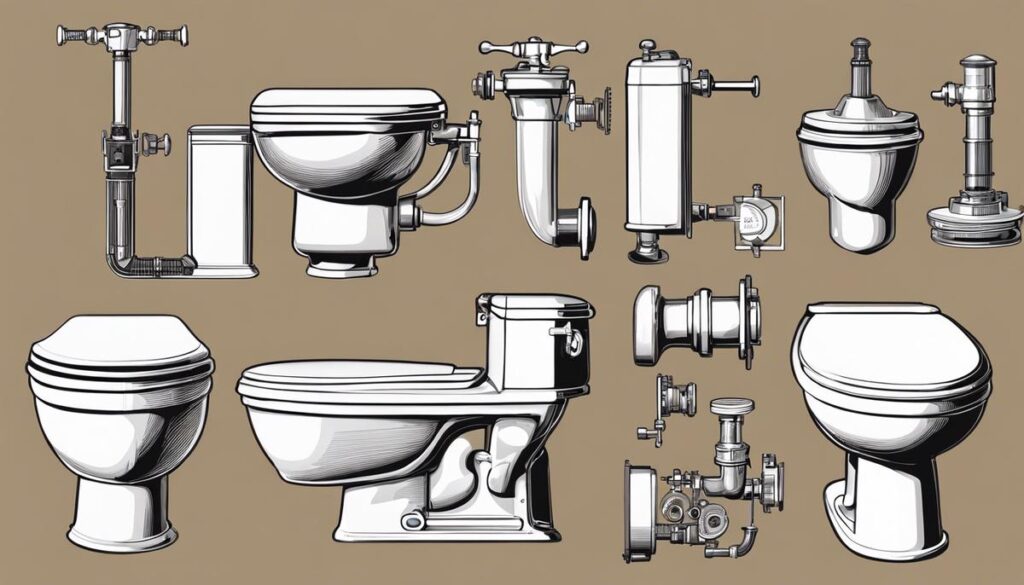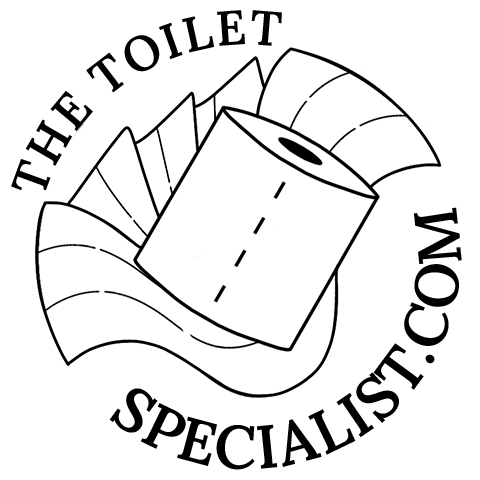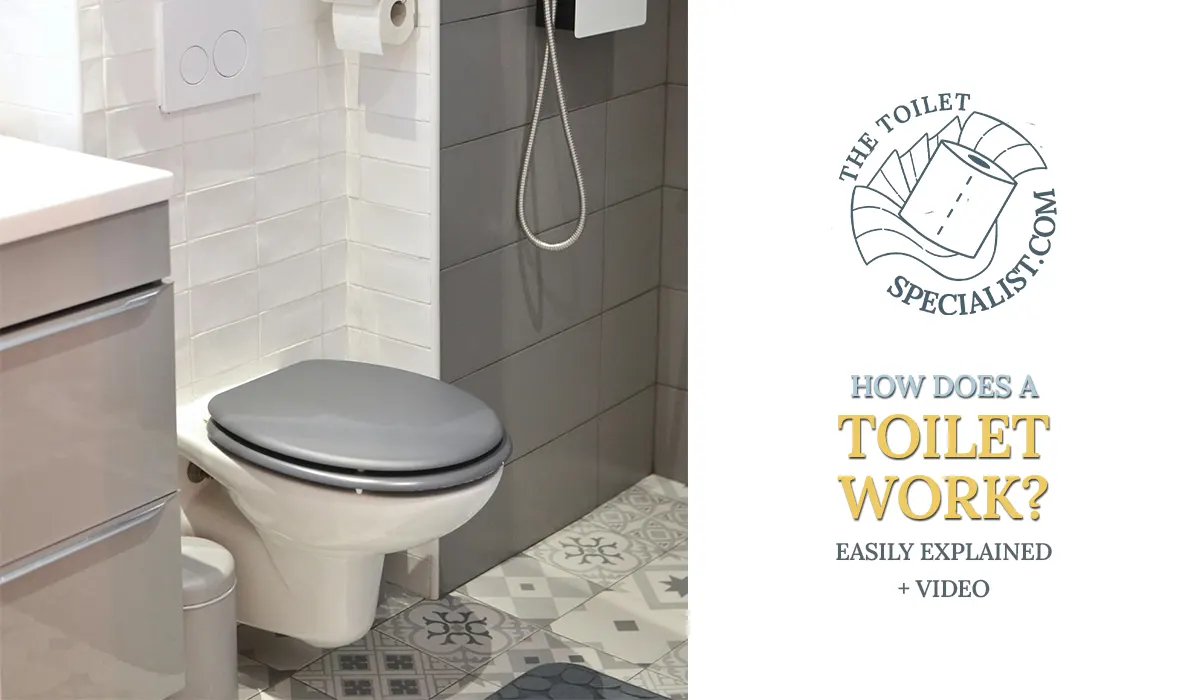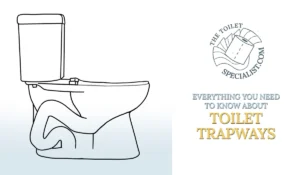Ever wondered about the magic behind the porcelain throne? Join us on a journey into the fascinating world of toilets! But how does a toilet work?
A traditional toilet works without electricity through a simple yet effective mechanism. When you flush, a lever raises a rubber flapper, allowing water from the tank to rush into the bowl. This sudden influx of water creates a powerful siphon, pulling waste and water from the bowl into the sewer line. Gravity then takes over, causing the water level in the bowl and tank to return to their original positions.
Get ready for a toilet tour like no other – it’s time to flush out the mysteries and plunge into the whimsical workings of your trusty commode!
Knowing the important parts of a toilet
Plumbing pros know that every household depends on the efficient operation of its toilets. But, every homeowner should also have a basic understanding of their toilet’s key components. Being able to identify these parts makes it much easier to understand this guide!
1. Toilet Bowl
The most noticeable part of a toilet is the bowl. It’s the part that holds the water and waste before it’s flushed away. Bowls usually come in either round or elongated shapes to accommodate different bathroom sizes and homeowner preferences.
2. Toilet Tank:
Mounted directly on the bowl is the toilet tank. This is where water is stored before a flush. When the toilet handle is pushed, this water rushes into the bowl, carrying waste down into the sewer system.
3. Toilet Handle
This is the part that ensures user participation in the system. It’s typically connected to a chain inside the tank which lifts the flapper, starting the whole flush process. Sometimes the chain gets tangled which causes the flapper to not function properly.
Let’s now look at the inside mechanics!
4. Fill Valve
Also located within the tank is the fill valve. This component is responsible for refilling the tank once it’s been flushed. It’s connected to your home’s water supply, and fills the tank to a preset level.
5. Flush Valve
This is not to be confused with the fill valve. The flush valve controls the release of water from the tank when it’s flushed, and is where the flapper is attached.
6. Flapper
Found within the tank, as part of the flush valve, is the flapper. This cleverly designed device acts as a seal for the tank. When the flush handle is pushed, the flapper lifts, releasing the water from the tank into the bowl. Luckily, flappers are super easy to buy and to replace.

With a basic knowledge of these parts, you’ll be better equipped to recognize unusual behavior, attempt simple do-it-yourself fixes, and communicate more effectively with professional plumbers when necessary. Remember, toilets are not complex, but knowing how to maintain them is a skill every homeowner should have in their toolbox.
Here’s a handy video that explains it all:
How does a toilet bowl flush?
It’s actually very simple. A toilet bowl flushes by relying on manual mechanisms. No electricity is involved. Let’s go through all of the steps to get a better understanding.
1. Pushing of the handle
Getting down to brass tacks, after a toilet is flushed, the flush valve is lifted, allowing water to flow into the bowl. This process starts when the toilet handle is pushed, setting the flush mechanism into action. The primary function of the handle is to lift the flapper, also known as a tank ball if you have an older toilet, from atop the flush valve. This simple action is the catalyst for the entire flush operation.
2. The flush valve starts working
Upon the lifting of the flapper, water from the toilet tank rushes down into the toilet bowl. As this happens, powerful suction or siphoning effect is created, which pulls waste and toilet paper from the bowl down the main pipe. The promptness and force of this momentum are crucial for effective flushing and can regulate how much water is needed per flush.
3. The fill valve comes into play
Following this action, the refill phase comes into play. As water level drops in the tank, the flush valve descends back onto its opening, blocking the passageway from the tank to the bowl. Simultaneously, the fill valve (also known as a ballcock) is kick-started because the float, which is connected to it, drops due to the lowering water level.
This fill valve is responsible for replenishing the lost water in the tank and consequently, refloats the float. During this refill process, the overflow tube plays a critical role. It ensures that if the fill valve malfunctions and doesn’t stop filling the tank, the excess water is redirected into the bowl instead of flooding onto your bathroom floor.
The timely ceasing of water refill goes hand in hand with the lift of the float. As the water reaches the desired level in the tank, the float rises high enough to shut the fill valve off, stopping the tank from receiving any more water and preparing it for the next flush.
Now your toilet is ready to be used again.

How does the refilling of the toilet work?
Let’s dive a bit deeper into how the refilling process works.
When holding the esteemed title of an essential component in a toilet mechanism, the refill phase might not seem glamorous. Yet, it is the essence of operation, making it a pivotal part of water conservation and proper toilet maintenance.
Initiating the refill phase of a toilet tank, the flush valve, a cylindrical part housing the flapper plays a crucial role. It ensures that the water does not run constantly after the flush. Once the flapper seals the valve, the refill process commences as the fill valve starts directing water into the tank.
Located at the left base of the tank, the fill valve functions as the gatekeeper, controlling water flow back into the tank. This piece of equipment starts refilling the tank with fresh water as soon as the flush cycle ends, and it does so until the float signals it to stop.
Overflow tube
The overflow tube, another key renal of the toilet mechanism that does double duty. Besides accommodating excessive water to prevent overflowing, it stands as a direct channel for water to refill the toilet bowl. While the tank fills, a small amount of water is also sent down the overflow tube. This replenishes the water in the toilet bowl ready for the next use.
If this all sounds too confusing I made a detailed post about how the fill valve works which you can find here (including handy images).
An unsung hero of the journey, the float, rises alongside the water level during the refill phase. Once the water level reaches a predetermined height, the float triggers the fill valve to shut off the supply, completing the refill phase. The toilet tank is now prepared for the next flush.
The toilet tank refill process, as one can see, doesn’t merely involve filling it up with water. It’s a complex, yet precise, series of events – a testament to brilliant human ingenuity. Recognizing these mechanisms’ functions can be indispensable in maintaining an efficient, long-lasting toilet system.
So, in short
- Someone pushes the flush handle
- The flapper gets lifted allowing the stored tank water to go inside the bowl and flush away any waste
- Once the water is being flushed away, the float drops (because the water level drops)
- Now the fill valve is triggered and allows new water to fill the tank– waiting to be flushed again
Whether it’s spotting for leakages, replacing worn-out parts, or understanding how your toilet works, every step can contribute majorly towards water conservation. For this, you should know your toilet’s GPF.
Remember, knowledge isn’t just power; it’s also the ticket to a smoothly running, efficient home plumbing system. So, next time you flush, remember the elegant ballet staged within your toilet tank. You’re not just sending waste away; you’re also promising the start of another lifecycle.
Disclaimer: TheToiletSpecialist.com is not responsible for any damage caused to your toilet and surroundings by (wrongly) interpreting information found on this site. Please seek custom advice from a professional to evaluate your current situation.
This article may contain affiliate links at no extra cost to you. AF links help support this blog so that it can exist and expand for years to come!





